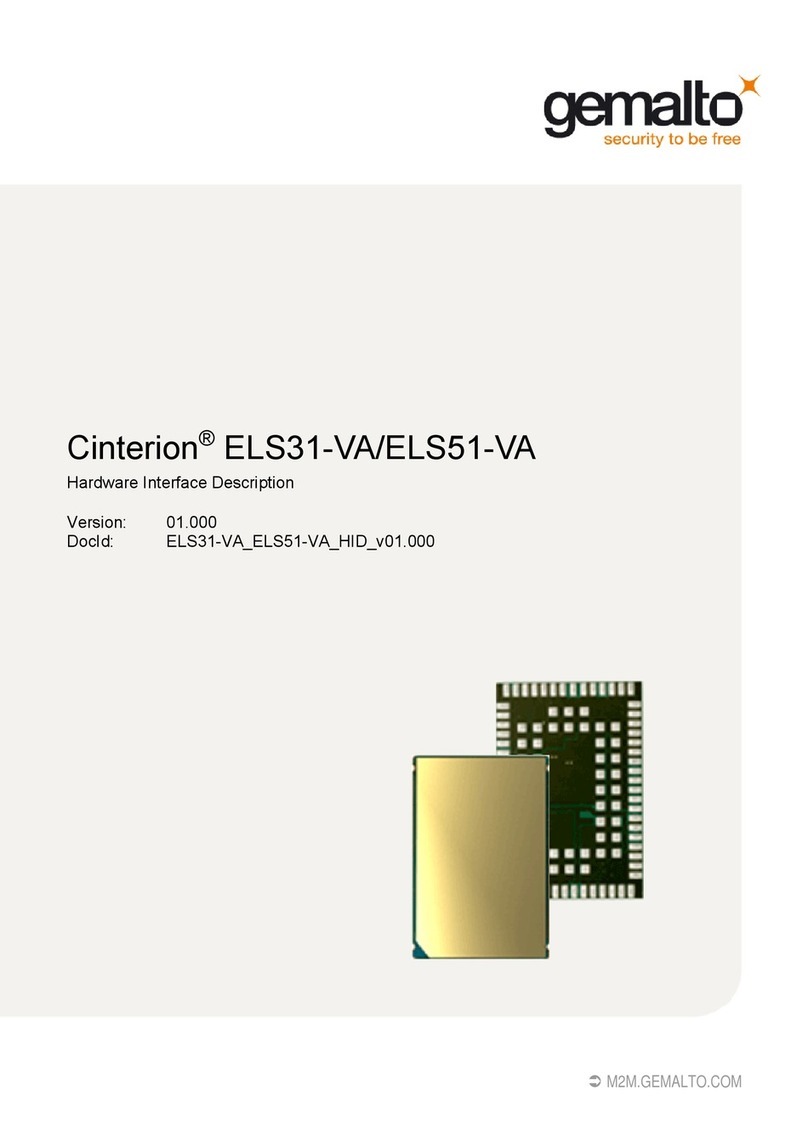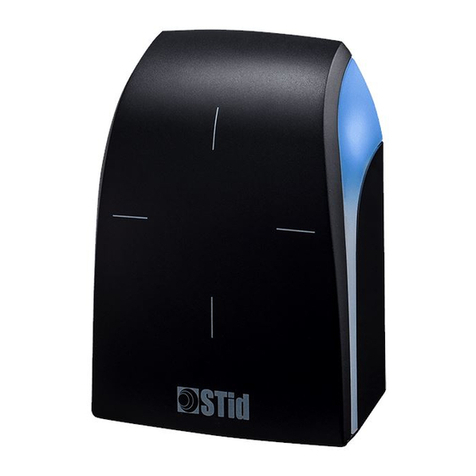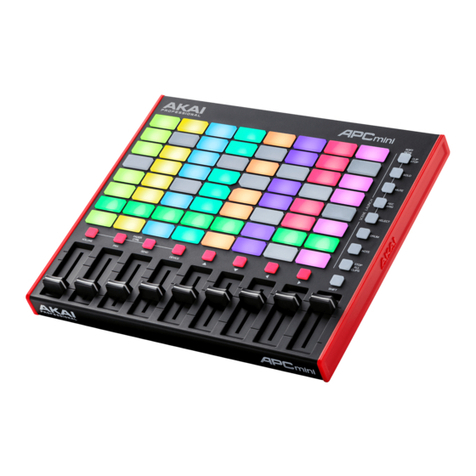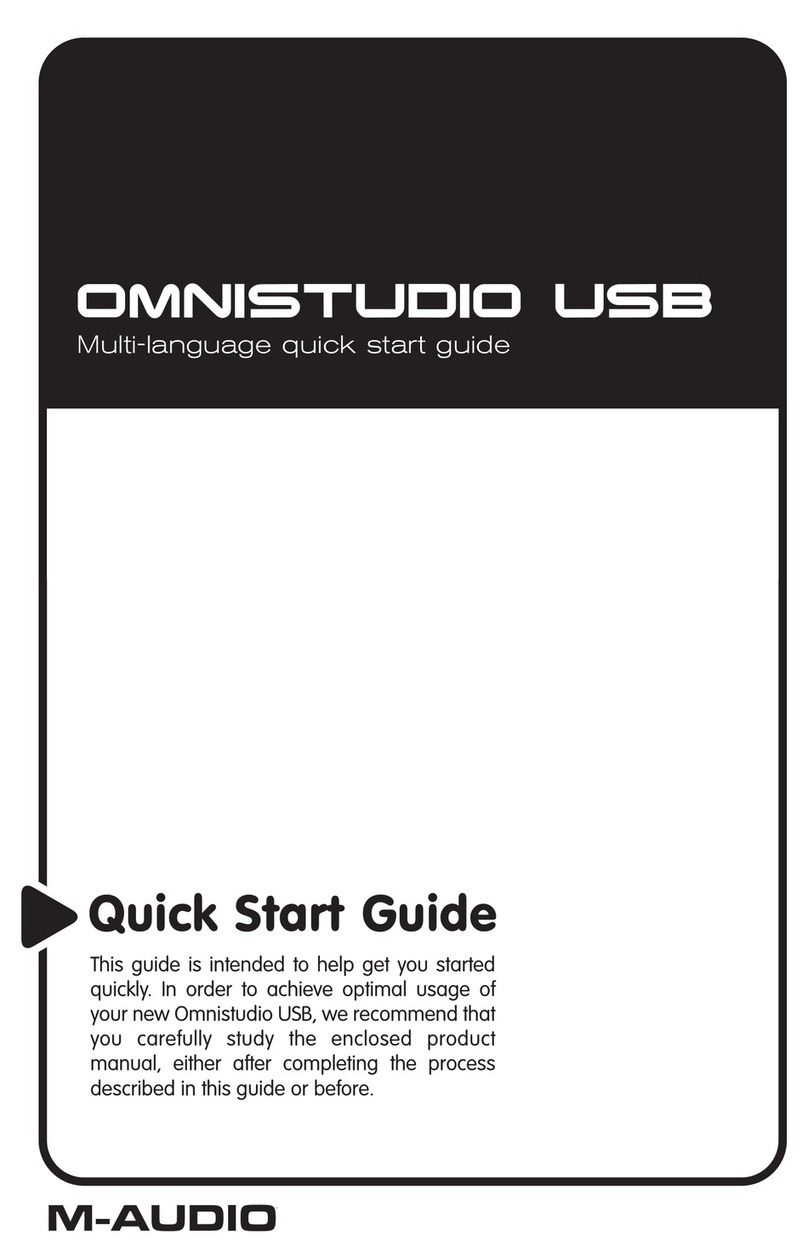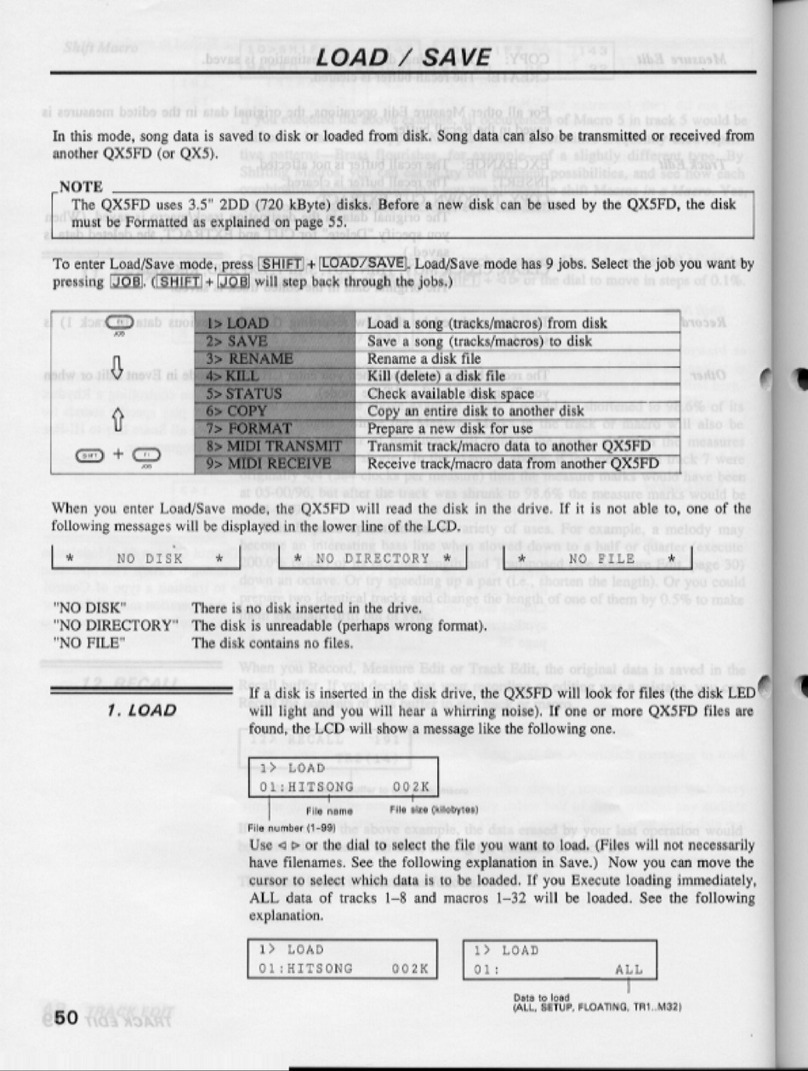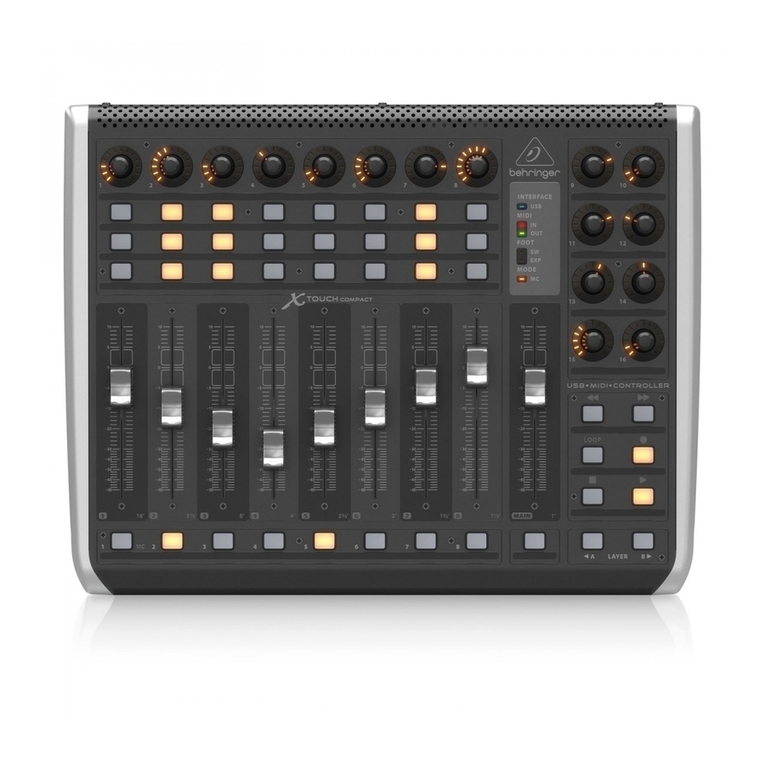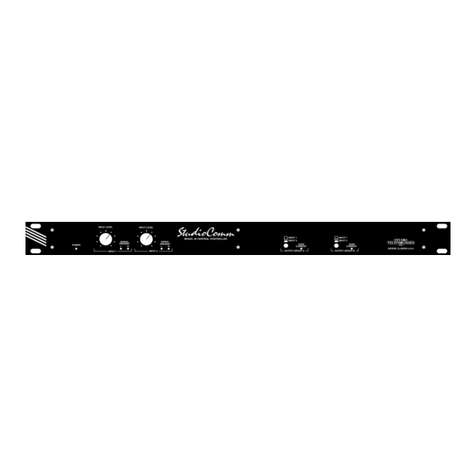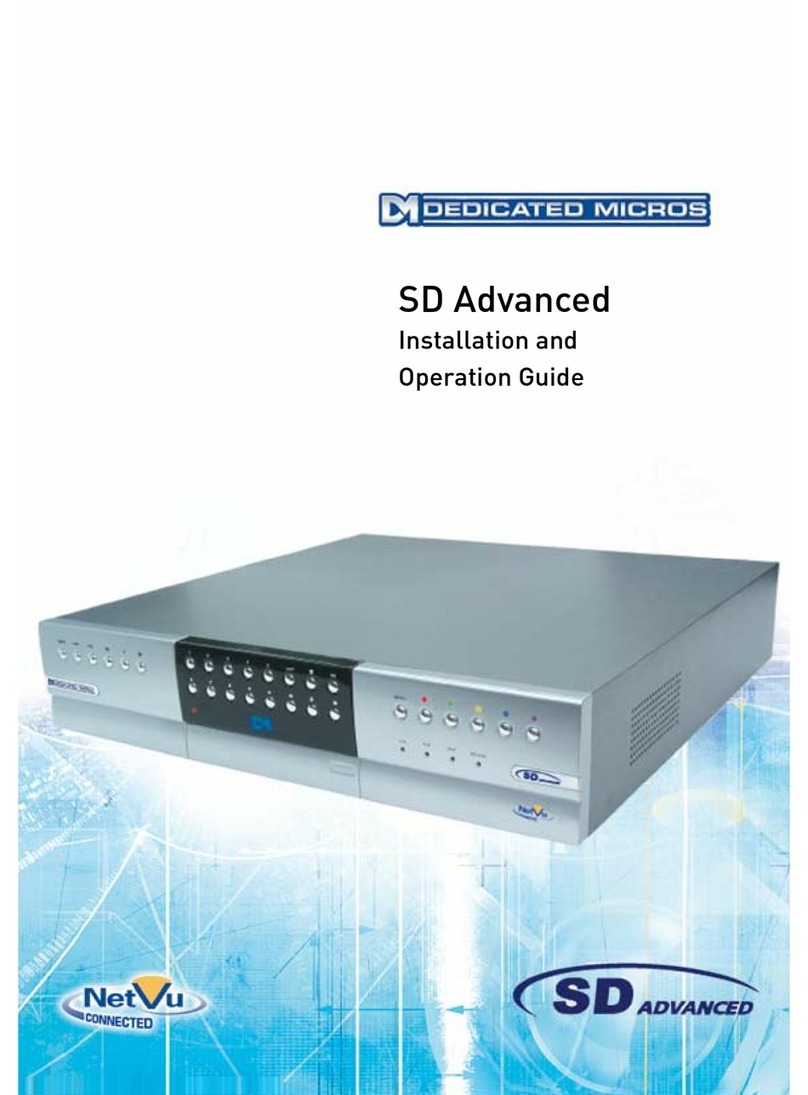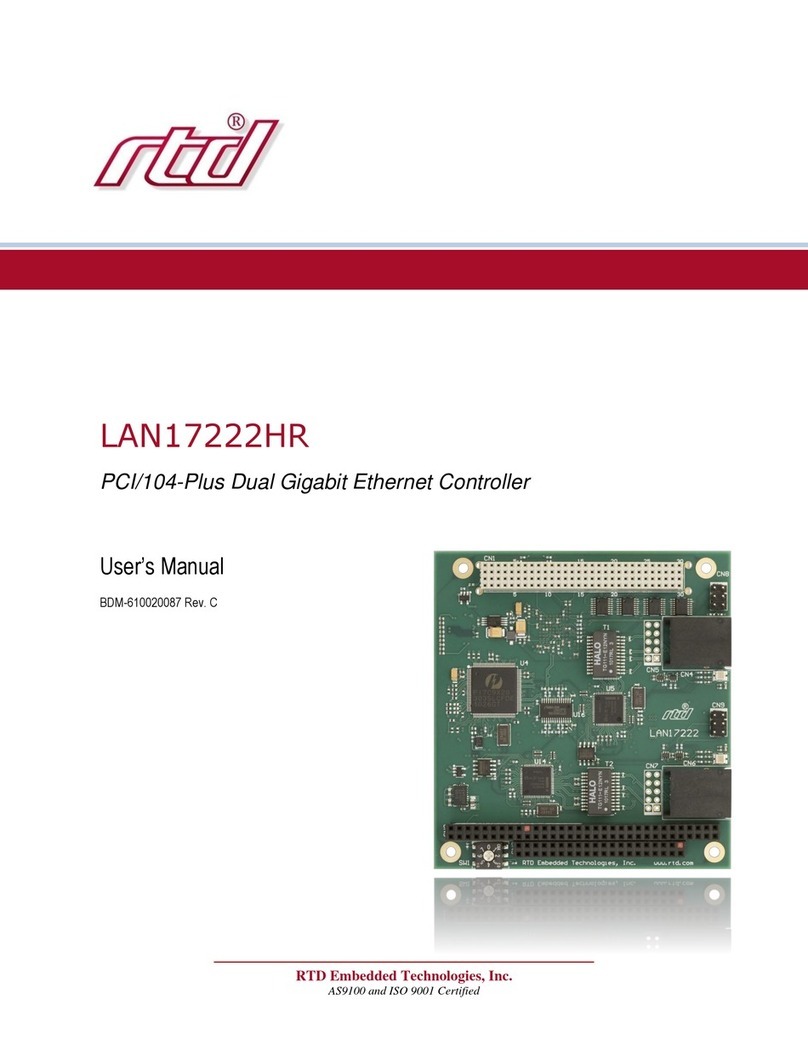Gemalto Cinterion PLS62T-W USB User manual

M2M.GEMALTO.COM
Cinterion®Java Terminal
Hardware Interface Description
Version: 01
DocId: PLS62T-W_HID_v01

GENERAL NOTE
THE USE OF THE PRODUCT INCLUDING THE SOFTWARE AND DOCUMENTATION (THE "PROD-
UCT") IS SUBJECT TO THE RELEASE NOTE PROVIDED TOGETHER WITH PRODUCT. IN ANY
EVENT THE PROVISIONS OF THE RELEASE NOTE SHALL PREVAIL. THIS DOCUMENT CONTAINS
INFORMATION ON GEMALTO M2M PRODUCTS. THE SPECIFICATIONS IN THIS DOCUMENT ARE
SUBJECT TOCHANGEATGEMALTOM2M'SDISCRETION. GEMALTO M2M GMBH GRANTS A NON-
EXCLUSIVE RIGHT TO USE THE PRODUCT. THE RECIPIENT SHALL NOT TRANSFER, COPY,
MODIFY, TRANSLATE, REVERSE ENGINEER, CREATE DERIVATIVE WORKS; DISASSEMBLE OR
DECOMPILE THE PRODUCT OR OTHERWISE USE THE PRODUCT EXCEPT AS SPECIFICALLY
AUTHORIZED. THE PRODUCT AND THIS DOCUMENT ARE PROVIDED ON AN "AS IS" BASIS ONLY
AND MAY CONTAIN DEFICIENCIES OR INADEQUACIES. TO THE MAXIMUM EXTENT PERMITTED
BY APPLICABLE LAW, GEMALTO M2M GMBH DISCLAIMS ALL WARRANTIES AND LIABILITIES.
THE RECIPIENT UNDERTAKES FOR AN UNLIMITED PERIOD OF TIME TO OBSERVE SECRECY
REGARDING ANY INFORMATION AND DATA PROVIDED TO HIM IN THE CONTEXT OF THE DELIV-
ERY OF THE PRODUCT. THIS GENERAL NOTE SHALL BE GOVERNED AND CONSTRUED
ACCORDING TO GERMAN LAW.
Copyright
Transmittal, reproduction, dissemination and/or editing of this document as well as utilization of its con-
tents and communication thereof to others without express authorization are prohibited. Offenders will be
held liable for payment of damages. All rights created by patent grant or registration of a utility model or
design patent are reserved.
Copyright © 2018, Gemalto M2M GmbH, a Gemalto Company
Trademark Notice
Gemalto, the Gemalto logo, are trademarks and service marks of Gemalto and are registered in certain
countries. Microsoft and Windows are either registered trademarks or trademarks of Microsoft Corpora-
tion in the United States and/or other countries. All other registered trademarks or trademarks mentioned
in this document are property of their respective owners.
PLS62T-W_HID_v01 2018-06-20
Confidential / Prelimenary
Cinterion®Java Terminal Hardware Interface Description
2
Page 2 of 91
Document Name: Cinterion®Java Terminal Hardware In-
terface Description
Version: 01
Date: 2018-06-20
DocId: PLS62T-W_HID_v01
Status Confidential / Prelimenary

Cinterion®Java Terminal Hardware Interface Description
Contents
125
PLS62T-W_HID_v01 2018-06-20
Confidential / Prelimenary
Page 3 of 91
Contents
0 Document History...................................................................................................... 8
1 Introduction.................................................................................................................9
1.1 Related Documents .........................................................................................10
1.2 Terms and Abbreviations.................................................................................10
1.3 Regulatory and Type Approval Information .....................................................12
1.3.1 Directives and Standards....................................................................12
1.3.2 Safety Precautions..............................................................................15
1.4 Product Label...................................................................................................17
2 Product Concept.......................................................................................................18
2.1 Key Features at a Glance................................................................................18
3 Interface Description ................................................................................................22
3.1 Overview..........................................................................................................22
3.2 Block Diagram..................................................................................................23
3.3 Terminal Circuit................................................................................................24
3.4 Operating Modes .............................................................................................25
3.5 RS-232 Interface..............................................................................................26
3.5.1 9-Pole D-sub Connector .....................................................................26
3.6 USB Interface (PLS62T-W USB).....................................................................27
3.7 Ethernet Interface (PLS62T-W LAN) ...............................................................28
3.8 GPIO Interface.................................................................................................29
3.8.1 Serial Interface ASC1 .........................................................................30
3.8.2 I2C Interface........................................................................................31
3.8.3 SPI Interface.......................................................................................32
3.8.4 PWM Interface....................................................................................33
3.8.5 Pulse Counter.....................................................................................33
3.8.6 DSR0 signal........................................................................................33
3.9 Power Supply...................................................................................................34
3.10 Power Up/Power Down Scenarios...................................................................35
3.10.1 Turn Java Terminal on........................................................................35
3.10.2 Reset/Restart Java Terminal ..............................................................35
3.10.3 Turn Java Terminal off........................................................................36
3.10.4 Disconnecting power supply...............................................................36
3.11 Automatic thermal shutdown............................................................................37
3.12 Hardware Watchdog........................................................................................37
3.13 RTC..................................................................................................................37
3.14 SIM Interface....................................................................................................38
3.15 Status LEDs.....................................................................................................39
3.16 RF Antenna Interface.......................................................................................40

Cinterion®Java Terminal Hardware Interface Description
Contents
125
PLS62T-W_HID_v01 2018-06-20
Confidential / Prelimenary
Page 4 of 91
4 Electrical and Environmental Characteristics........................................................41
4.1 Absolute Maximum Ratings.............................................................................41
4.2 Electrical Specifications of the Application Interface........................................42
4.2.1 On/Off Control.....................................................................................42
4.2.2 RS-232 Interface.................................................................................42
4.2.3 USB Interface (PLS62T-W USB)........................................................42
4.2.4 GPIO Interface....................................................................................43
4.2.5 Ethernet Interface (PLS62T-W LAN) ..................................................44
4.3 Power Supply Ratings......................................................................................45
4.4 Operating Temperatures..................................................................................49
4.5 Antenna Interface.............................................................................................50
4.6 Storage Conditions ..........................................................................................52
5 Mechanics, Mounting and Packaging.....................................................................53
5.1 Mechanical Dimensions...................................................................................53
5.2 Mounting the Java Terminal.............................................................................56
5.3 Packaging........................................................................................................57
6 Full Type Approval....................................................................................................58
6.1 Gemalto M2M Reference Setup ......................................................................58
6.2 Restrictions......................................................................................................59
6.3 CE Conformity..................................................................................................59
6.4 EMC.................................................................................................................59
6.5 Compliance with FCC and IC Rules and Regulations .....................................60
7 List of Parts and Accessories..................................................................................62
8 Appendix A: (Hardware) Watchdog.........................................................................63
8.1 Reset Conditions..............................................................................................64
8.1.1 Reset stages.......................................................................................64
8.1.2 Reset Delay ........................................................................................65
8.2 Restart Conditions ...........................................................................................65
8.3 Complete Watchdog Configuration..................................................................66
8.3.1 Watchdog (WD) Command Specification ...........................................66
8.4 Qualified Watchdog Configuration...................................................................76
8.4.1 I2C Interface Command Specification.................................................76
8.5 Configuring GPIO Directions............................................................................81
8.5.1 Configuration using I2C Interface........................................................82
8.5.2 Configuration using TXD0 Line of ASC0 Interface..............................83

Cinterion®Java Terminal Hardware Interface Description
Contents
125
PLS62T-W_HID_v01 2018-06-20
Confidential / Prelimenary
Page 5 of 91
9 Appendix B: Ethernet Setup and Usage.................................................................84
9.1 Connection Setup ............................................................................................84
9.2 Connection Usage ...........................................................................................86
9.2.1 Access LTE Terminal via Telnet (or SSH)..........................................86
9.2.2 Access LTE Terminal via FTP ............................................................87
9.2.3 Security Notes.....................................................................................88
9.2.4 Configure IP Address..........................................................................88
9.2.5 Edit APN List.......................................................................................88
9.2.6 Enter SIM Pin......................................................................................89
9.2.7 Transparent Data Exchange...............................................................89
9.2.8 Update LTE Module Firmware............................................................90
9.2.9 Update Ethernet Sub-System Software..............................................90

Cinterion®Java Terminal Hardware Interface Description
Tables
6
PLS62T-W_HID_v01 2018-06-20
Confidential / Prelimenary
Page 6 of 91
Tables
Table 1: Cinterion®Java Terminal overview...................................................................9
Table 2: Terms and abbreviations.................................................................................10
Table 3: Directives ........................................................................................................12
Table 4: Standards of North American type approval...................................................12
Table 5: Standards of European type approval.............................................................12
Table 6: Requirements of quality ..................................................................................13
Table 7: Standards of the Ministry of Information Industry of the People’s Republic
of China...........................................................................................................14
Table 8: Toxic or hazardous substances or elements with defined concentration
limits................................................................................................................14
Table 9: Java Terminal label information......................................................................17
Table 10: Java Terminal‘ interfaces................................................................................22
Table 11: Overview of operating modes .........................................................................25
Table 12: 9-pole D-sub (female) RS-232........................................................................26
Table 13: Female 8-pole RJ-45 Ethernet connector.......................................................28
Table 14: GPIO connector pin availability and alternate pin functionalities....................29
Table 15: Female 6-pole Western plug for power supply, ignition, power down.............34
Table 16: Allowed maximum antenna gain (including cable loss)...................................40
Table 17: Absolute maximum ratings..............................................................................41
Table 18: Operating supply voltage for Java Terminal....................................................41
Table 19: On/Off control line specifications.....................................................................42
Table 20: RS-232 interface specifications.......................................................................42
Table 21: GPIO interface specifications (requirements) .................................................43
Table 22: Power supply specifications............................................................................45
Table 23: Temperature characteristics............................................................................49
Table 24: RF Antenna interface GSM / UMTS / LTE......................................................50
Table 25: Storage conditions ..........................................................................................52
Table 26: List of parts and accessories...........................................................................62
Table 27: Address register for I2C commands................................................................77
Table 28: I2C status result codes....................................................................................78

Cinterion®Java Terminal Hardware Interface Description
Figures
7
PLS62T-W_HID_v01 2018-06-20
Confidential / Prelimenary
Page 7 of 91
Figures
Figure 1: Sample Java Terminal label PLS62T-W USB.................................................17
Figure 2: Java Terminal 3D view....................................................................................22
Figure 3: Block diagram .................................................................................................23
Figure 4: Java Terminal circuit block diagram................................................................24
Figure 5: Pin assignment RS-232 (D-sub 9-pole female)...............................................26
Figure 6: 8-pole RJ-45 Ethernet connector (female)......................................................28
Figure 7: PLS62T-W USB: GPIO connectors (8-pin and 12-pin)...................................29
Figure 8: Characteristics of SPI modes..........................................................................32
Figure 9: 6-pole Western jack for power supply, ignition, reset, typical connection.......34
Figure 10: SIM interface...................................................................................................38
Figure 11: Status LED......................................................................................................39
Figure 12: Antenna connectors........................................................................................40
Figure 13: Java Terminal 3D overview.............................................................................53
Figure 14: Java Terminal mechanical dimensions...........................................................54
Figure 15: Java Terminal exploded view..........................................................................55
Figure 16: Mounting the Java Terminal............................................................................56
Figure 17: Reference equipment for approval..................................................................58
Figure 18: Hardware watchdog configuration...................................................................63
Figure 19: Write data to address register.........................................................................79
Figure 20: Read data from address register.....................................................................80
Figure 21: Setting GPIO direction to OUTPUT via I2C interface......................................82
Figure 22: Setting GPIO direction to INPUT via I2C interface..........................................82
Figure 23: Setting GPIO direction to OUTPUT via TXD0 line (at 1200bps).....................83
Figure 24: Setting GPIO direction to INPUT via TXD0 line (at 1200bps).........................83

Cinterion®Java Terminal Hardware Interface Description
1 Introduction
17
PLS62T-W_HID_v01 2018-06-20
Confidential / Prelimenary
Page 9 of 91
1 Introduction
This document1describes the hardware of the Cinterion®Java Terminal:
•PLS62T-W USB implements a USB 2.0 interface with a USB-B connector
•PLS62T-W LAN implements an Ethernet interface with a RJ-45 8-pin connector
All LTE Terminals contains a Cinterion®PLS62-W module and implements a V.24 / V.28 RS-
232 interface with a D-sub 9-pole female socket as well as a 6-pole Western jack as plug-in
power supply connector.
Wherever necessary and appropriate this document distinguishes between these two variants.
Table 1 gives a short overview of the available interfaces of the Java Terminal.
The scope of this document includes interface specifications, electrical as well as mechanical
characteristics of the Java Terminal. It specifies standards pertaining to wireless applications
and outlines requirements that must be adhered to for successful product design. The Java
Terminal is a compact GSM/UMTS/LTE modem for the transfer of data in GSM/UMTS/LTE net-
works. Industrial standard interfaces and an integrated SIM card reader allow using the Java
Terminal easily as GSM/GPRS/UMTS terminal.
1. The document is effective only if listed in the appropriate Release Notes as part of the technical docu-
mentation delivered with your Gemalto M2M product.
Table 1: Cinterion®Java Terminal overview
Module/Interface PLS62T-W
USB PLS62T-W
LAN
Cinterion®module PLS62-W PLS62-W
RS-232 (Sub-D)
USB (USB-B) -
GPIO interface
GPIOs, Power, ASC1, SPI, I2C
Ethernet (RJ-45) -
Power supply (RJ-11)
2 RF antenna

Cinterion®Java Terminal Hardware Interface Description
1.1 Related Documents
17
PLS62T-W_HID_v01 2018-06-20
Confidential / Prelimenary
Page 10 of 91
1.1 Related Documents
[1] AT Command Set for your Java Terminal product
[2] Release Notes for your Java Terminal product
To visit the Gemalto M2M GmbH Website please use the following link:
http://m2m.gemalto.com
1.2 Terms and Abbreviations
Table 2: Terms and abbreviations
Abbreviation Description
ARP Antenna Reference Point
ATC AT Command
BTS Base Transceiver Station
CB Cell Broadcast
CODEC Coder-Decoder
DAI Digital Audio Interface
DCE Data Circuit terminating Equipment
DSR Data Set Ready
DTR Data Terminal Ready
EFR Enhanced Full Rate
EGSM Enhanced GSM
EMC Electromagnetic Compatibility
ESD Electrostatic Discharge
ETS European Telecommunication Standard
FDMA Frequency Division Multiple Access
G.C.F. GSM Conformity Forum
GSM Global Standard for Mobile Communication
HW Hardware
I2C Inter Integrated Circuit
IC Integrated Circuit
IF Intermediate Frequency
IMEI International Mobile Equipment Identifier
I/O Input/ Output
IGT Ignition
ISO International Standards Organization
ITU International Telecommunications Union

Cinterion®Java Terminal Hardware Interface Description
1.2 Terms and Abbreviations
17
PLS62T-W_HID_v01 2018-06-20
Confidential / Prelimenary
Page 11 of 91
kbps kbits per second
LVD Low voltage Directive
Mbps Mbits per second
MCU Microprocessor Controll Unit
MMI Machine Machine Interface
MO Mobile Originated
MS Mobile Station
MT Mobile Terminated
NC Not Connected
NTC Negative Temperature Coefficient
PA Power Amplifier
PCB Printed Circuit Board
PCM Pulse Code Modulation
PCS Personal Communication System
PD Power Down
PDU Protocol Data Unit
PoE Power over Ethernet
RED Radio Equipment Directive
RF Radio frequency
RI Ring Indication
RX Receive direction
SIM Subscriber Identification Module
SMS Short Message Service
SW Software
TDD Time Division Duplex
TDMA Time Division Multiple Access
TX Transmit direction
UART Universal Asynchronous Receiver and Transmitter
Table 2: Terms and abbreviations
Abbreviation Description

Cinterion®Java Terminal Hardware Interface Description
1.3 Regulatory and Type Approval Information
17
PLS62T-W_HID_v01 2018-06-20
Confidential / Prelimenary
Page 12 of 91
1.3 Regulatory and Type Approval Information
1.3.1 Directives and Standards
Java Terminal have been designed to comply with the directives and standards listed below1.
1. Standards of North American type approval do not apply to EHS5T RS485, 3G/WCDMA related stan-
dards do not apply to BGS5T USB.
Table 3: Directives
2014/53/EU Directive of the European Parliament and of the council of 16 April 2014
on the harmonization of the laws of the Member States relating to the mak-
ing available on the market of radio equipment and repealing Directive
1999/ 05/EC.
The product is labeled with the CE conformity mark - see Section 6.3.
2002/95/EC (RoHS 1)
2011/65/EC (RoHS 2) DirectiveoftheEuropean Parliamentand ofthe Council of
27 January 2003 (and revised on 8 June 2011) on the
restriction of the use of certain hazardous substances in
electrical and electronic equipment (RoHS)
2002/96/EC Directive of the European Parliament and of the Council on waste electri-
cal and electronic equipment (WEEE)
2003/108/EC Directive of the European Parliament and of the Council of 8 December
2003 amending directive 2002/96/ec on waste electrical and electronic
equipment (WEEE)
Table 4: Standards of North American type approval
CFR Title 47 “Code of Federal Regulations, Part 15 B, Part 22 and Part 24 (Telecom-
munications, PCS)”; US Equipment Authorization FCC
OET Bulletin 65
(Edition 97-01) Evaluating Compliance with FCC Guidelines for Human Exposure to
Radiofrequency Electromagnetic Fields
UL 60 950-1 Product Safety Certification (Safety requirements)
NAPRD.03 V5.32 “Overview of PCS Type certification review board
Mobile Equipment Type Certification and IMEI control”
PCS Type Certification Review board (PTCRB)
RSS102
RSS132
RSS133
Canadian Standard
IEEE Std. C95.1-1999 IEEE Standard for Safety Levels with Respect to Human Exposure to
Radio Frequency Electromagnetic Fields, 3 kHz to 300 GHz
Table 5: Standards of European type approval
3GPP TS 51.010-1 “Digital cellular telecommunications system (Phase 2); Mobile Station
(MS) conformance specification”
ETSI EN 301 511 V12.5.1 Global System for Mobile communications (GSM); Mobile Stations (MS)
equipment; Harmonized Standard covering the essential requirements of
article 3.2 of Directive 2014/53/EU
GCF-CC V3.67 Global Certification Forum - Certification Criteria

Cinterion®Java Terminal Hardware Interface Description
1.3 Regulatory and Type Approval Information
17
PLS62T-W_HID_v01 2018-06-20
Confidential / Prelimenary
Page 13 of 91
Draft ETSI EN 301 489-1
V2.2.0 ElectroMagnetic Compatibility (EMC) standard for radio equipment and
services; Part 1: Common technical requirements; Harmonized Standard
covering the essential requirements of article 3.1(b) of Directive 2014/53/
EU and the essential requirements of article 6 of Directive 2014/30/EU
DraftETSI EN301 489-52
V1.1.0 Electromagnetic Compatibility (EMC) standard for radio equipment and
services; Part 52: Specific conditions for Cellular Communication Mobile
and portable (UE) radio and ancillary equipment; Harmonized Standard
covering the essential requirements of article 3.1(b) of Directive 2014/53/
EU
ETSI EN 301 908-1
V11.1.1 IMT cellular networks; Harmonized Standard covering the essential
requirements of article 3.2 of the Directive 2014/53/EU; Part 1:
Introduction and common requirements
ETSI EN 301 908-2
V11.1.2 IMT cellular networks; Harmonized Standard covering the essential
requirements of article 3.2 of the Directive 2014/53/EU; Part 2: CDMA
Direct Spread (UTRA FDD) User Equipment (UE)
ETSI EN 301 908-13
V11.1.2 IMT cellular networks; Harmonised Standard covering the essential
requirements of article 3.2 of Directive 2014/53/EU; Part 13: Evolved Uni-
versal Terrestrial Radio Access (E-UTRA) User Equipment (UE)
EN 62311-2008 Assessment of electronic and electrical equipment related to human expo-
sure restrictions for electromagnetic fields (0 Hz - 300 GHz)
EN 60950-1:2006/
A11:2009+A1:2010+
A12:2011+A2:2013
Safety of information technology equipment
Table 6: Requirements of quality
IEC 60068 Environmental testing
DIN EN 60529 IP codes. The Java Terminal comply with IP40.
Table 5: Standards of European type approval

Cinterion®Java Terminal Hardware Interface Description
1.3 Regulatory and Type Approval Information
17
PLS62T-W_HID_v01 2018-06-20
Confidential / Prelimenary
Page 14 of 91
Table 8: Toxic or hazardous substances or elements with defined concentration limits
Table 7: Standards of the Ministry of Information Industry of the People’s Republic of China
SJ/T 11363-2006 “Requirements for Concentration Limits for Certain Hazardous Sub-
stances in Electronic Information Products” (2006-06).
SJ/T 11364-2006 “Marking for Control of Pollution Caused by Electronic
Information Products” (2006-06).
Accordingto the“Chinese Administrationonthe Control
of Pollution caused by Electronic Information Products”
(ACPEIP)theEPUP,i.e., Environmental Protection Use
Period, of this product is 20 years as per the symbol
shown here, unless otherwise marked. The EPUP is valid only as longas
the product is operated within the operating limits described in the Hard-
ware Interface Description.
Please see Table 1.3.2 for an overview of toxic or hazardous substances
or elements that might be contained in product parts in concentrations
above the limits defined by SJ/T 11363-2006.

Cinterion®Java Terminal Hardware Interface Description
1.3 Regulatory and Type Approval Information
17
PLS62T-W_HID_v01 2018-06-20
Confidential / Prelimenary
Page 15 of 91
1.3.2 Safety Precautions
The following safety precautions must be observed during all phases of the operation, usage,
service or repair of any cellular terminal or mobile incorporating Java Terminal. Manufacturers
of the cellular terminal are advised to convey the following safety information to users and op-
erating personnel and incorporate these guidelines into all manuals supplied with the product.
Failure to comply with these precautions violates safety standards of design, manufacture and
intended use of the product. Gemalto M2M GmbH assumes no liability for customer’s failure to
comply with these precautions.
When in hospitals or other health care facilities, observe the restrictions on the use
of mobiles. Switch off the cellular terminal or mobile if to be instructed to do so by
the guidelines posted in sensitive areas. Medical equipment may be sensitive to RF
energy.
The operation of cardiac pacemakers, other implanted medical equipment and
hearing aids can be affected by interference from cellular terminals or mobiles
placed close to the device. If in doubt about potential danger, contact the physician
or the manufacturer of the device to verify that the equipment is properly shielded.
Pacemaker patients are advised to keep their hand-held mobile away from the
pacemaker, while it is on. This personalsubgroup always should check thedistance
to the mobile.
Switch off the cellular terminal or mobile before boarding an aircraft. Make sure it
cannot be switched on inadvertently. The operation of wireless appliances in an air-
craft is forbidden to prevent interference with communications systems. Failure to
observe these instructions may lead to the suspension or denial of cellular services
to the offender, legal action, or both.
Check the local and actual laws about these themes.
Do not operate the cellular terminal or mobile in the presence of flammable gases
or fumes. Switch off the cellular terminal when you are near petrol stations, fuel
depots, chemical plants or where blasting operations are in progress. Operation of
any electrical equipment in potentially explosive atmospheres can constitute a
safety hazard.
Yourcellular terminalor mobile receives and transmits radio frequencyenergy while
switched on. Remember that interference can occur if it is used close to TV sets,
radios, computers or inadequately shielded equipment. Follow any special regula-
tions and always switch off the cellular terminal or mobile wherever forbidden, or
when you suspect that it may cause interference or danger.
Road safety comes first! Do not use a hand-held cellular terminal or mobile while
driving a vehicle unless it is securely mounted in a holder for speakerphone opera-
tion. Before making a call with a hand-held terminal or mobile park the vehicle.
Speakerphones must be installed by qualified personnel. Faulty installation or oper-
ation can constitute a safety hazard.
Check the actual and local laws about these themes.

Cinterion®Java Terminal Hardware Interface Description
1.3 Regulatory and Type Approval Information
17
PLS62T-W_HID_v01 2018-06-20
Confidential / Prelimenary
Page 16 of 91
IMPORTANT!
Cellular terminals or mobiles operate using radio signals and cellular networks. In
that case connections cannot be guaranteedat all times under all conditions. There-
fore, you should never rely solely upon any wireless device for essential communi-
cations, for example emergency calls.
Remember, in order to make calls or receive calls the cellular terminal or mobile
must be switched on in a service area with adequate cellular signal strength.
Some networks do not allow for emergency calls if certain network services or
phone features are in use (e.g. lock functions, fixed dialing etc.). You may need to
deactivate those features before you can make an emergency call.
Some networks require a valid SIM card to be properly inserted in the cellular ter-
minal or mobile.
If a power supply unit is used to supply the device it must meet the demands placed
on SELV circuits in accordance with EN60950. The maximum permissible connec-
tion length between the device and the supply source should not exceed 3m.
According to the guidelines for human exposure to radio frequency energy, an
antenna connected to the FME jack of the device should be placed at least 20cm
away from human bodies.

Cinterion®Java Terminal Hardware Interface Description
1.4 Product Label
17
PLS62T-W_HID_v01 2018-06-20
Confidential / Prelimenary
Page 17 of 91
1.4 Product Label
The label fixed to the bottom of a Java Terminal comprises the following information.
Figure 1: Sample Java Terminal label PLS62T-W USB
Table 9: Java Terminal label information
No. Information
1 Cinterion logo
2 Product name
3 Product variant
4 Marking "Made in Germany"
5 Product ordering number
6 Bar code (Code128)
7 Product IMEI
8 Date code
9 WEEE symbol (see Table 3)
10 Chinese RoHS symbol (see Table 7)
11 CE logo. May be replaced for samples with "Not for sale" (see also Section 6.3)
12 FCC Declaration of Conformity (DoC) logo
13 FCC ID for Java module contained in Java Terminal
14 IC ID for Java module contained in Java Terminal
15 Manufacturer code
16 Power supply unit ratings
17 Manufacturer code (2D)
1234
5
6
7
8
9
10
12
14
15
16 17
11
13

Cinterion®Java Terminal Hardware Interface Description
2 Product Concept
21
PLS62T-W_HID_v01 2018-06-20
Confidential / Prelimenary
Page 18 of 91
2 Product Concept
2.1 Key Features at a Glance
Feature Implementation
General
Incorporates Cinterion®
Java module The Java module handles all signal and data processing within the Java
Terminal. Internal software runs the application interface and the complete
GSM/UMTS/LTE protocol stack.
Frequency bands GSM/GPRS/EDGE:
Quad band GSM: 850/900/1800/1900MHz
UMTS/HSPA+ (I, II, IV, V, VIII, IX, XIX):
seven band: UMTS 800/850/900/(1700/2100)/1800/1900/2100MHz
LTE: (1, 2, 3, 4, 5, 7, 8, 12, 18, 19, 20, 28):
Twelve band LTE: 700/800/850/900/1700/2100/1800/1900/2100/2600MHz
GSM class Small MS
Output power (according
to release 99) Class 4 (+33dBm ±2dB) for EGSM850
Class 4 (+33dBm ±2dB) for EGSM900
Class 1 (+30dBm ±2dB) for GSM1800
Class 1 (+30dBm ±2dB) for GSM1900
Class E2 (+27dBm ± 3dB) for GSM 850 8-PSK
Class E2 (+26dBm ± 3dB) for GSM 900 8-PSK
Class E2 (+26dBm +3 /-4dB) for GSM 1800 8-PSK
Class E2 (+26dBm +3 /-4dB) for GSM 1900 8-PSK
Output power (according
to Release 8) Class 3 (+24dBm +1/-3dB) for UMTS 800, WCDMA FDD BdXIX
Class 3 (+24dBm +1/-3dB) for UMTS 850, WCDMA FDD BdV
Class 3 (+24dBm +1/-3dB) for UMTS 900, WCDMA FDD BdVIII
Class 3 (+24dBm +1/-3dB) for UMTS AWS, WCDMA FDD BdIV
Class 3 (+24dBm +1/-3dB) for UMTS 1800, WCDMA FDD BdIX
Class 3 (+24dBm +1/-3dB) for UMTS 1900, WCDMA FDD BdII
Class 3 (+24dBm +1/-3dB) for UMTS 2100, WCDMA FDD BdI
Output power (according
to Release 9) Class 3 (+23dBm ±2dB) for LTE 700, LTE FDD Bd12 <MFBI Bd17>
Class 3 (+23dBm ±2dB) for LTE 700, LTE FDD Bd28
Class 3 (+23dBm ±2dB) for LTE 800, LTE FDD Bd18
Class 3 (+23dBm ±2dB) for LTE 800, LTE FDD Bd19
Class 3 (+23dBm ±2dB) for LTE 800, LTE FDD Bd20
Class 3 (+23dBm ±2dB) for LTE 850, LTE FDD Bd5
Class 3 (+23dBm ±2dB) for LTE 900, LTE FDD Bd8
Class 3 (+23dBm ±2dB) for LTE AWS, LTE FDD Bd4
Class 3 (+23dBm ±2dB) for LTE 1800, LTE FDD Bd3
Class 3 (+23dBm ±2dB) for LTE 1900, LTE FDD Bd2
Class 3 (+23dBm ±2dB) for LTE 2100, LTE FDD Bd1
Class 3 (+23dBm ±2dB) for LTE 2600, LTE FDD Bd7
Power supply PLS62T-W USB:
Single supply voltage 8V to 30V
PLS62T-W LAN:
Single supply voltage 8V to 57V (Power-over-Ethernet support)

Cinterion®Java Terminal Hardware Interface Description
2.1 Key Features at a Glance
21
PLS62T-W_HID_v01 2018-06-20
Confidential / Prelimenary
Page 19 of 91
Operating temperature
(Java module board
temperature)
Normal operation: -30°C to +85°C
Extended operation: -40°C to -30°C and +85°C to +90°C
Physical Dimensions: 113.5mm x 75mm x 25.5mm
(excluding antenna and serial interface connectors)
Weight: 120g (approx.)
RoHS, WEEE All hardware components are fully compliant with the EU RoHS and WEEE
Directives
LTE features
3GPP Release 9 UE CAT 1 supported
DL 10.2Mbps, UL 5.2Mbps
HSPA features
3GPP Release 6,7 DL 7.2Mbps, UL 5.7Mbps
HSDPA Cat.8 / HSUPA Cat.6 data rates
Compressed mode (CM) supported according to 3GPP TS25.212
UMTS features
3GPP Release 4 PS data rate – 384 kbps DL / 384 kbps UL
CS data rate – 64 kbps DL / 64 kbps UL
GSM / GPRS / EDGE features
Data transfer GPRS:
• Multislot Class 12
• Full PBCCH support
• Mobile Station Class B
• Coding Scheme 1 – 4
EGPRS (EHSxT only):
• Multislot Class 12
• EDGE E2 power class for 8 PSK
• Downlink coding schemes – CS 1-4, MCS 1-9
• Uplink coding schemes – CS 1-4, MCS 1-9
• SRB loopback and test mode B
• 8-bit, 11-bit RACH
• PBCCH support
• 1 phase/2 phase access procedures
• Link adaptation and IR
• NACC, extended UL TBF
• Mobile Station Class B
CSD:
• V.110, RLP, non-transparent
• 2.4, 4.8, 9.6, 14.4kbps
• USSD
SMS • Point-to-point MT and MO
• Cell broadcast
• Text and PDU mode
Software
AT commands Hayes 3GPP TS 27.007, TS 27.005, Gemalto M2M
Feature Implementation

Cinterion®Java Terminal Hardware Interface Description
2.1 Key Features at a Glance
21
PLS62T-W_HID_v01 2018-06-20
Confidential / Prelimenary
Page 20 of 91
Java™ Open Platform Java™ Open Platform with
• Java™ profile IMP-NG & CLDC 1.1 HI
• Secure data transmission via HTTPS/SSL
• Multi-threading programming and multi-application execution
Major benefits: seamless integration into Java applications, ease of pro-
gramming,noneedfor applicationmicro-controller,extremelycost-efficient
hardware and software design – ideal platform for industrial GSM applica-
tions.
ThememoryspaceavailableforJavaprogramsis around31MBintheflash
file system and around 18MB RAM. Application code and data share the
space in the flash file system and in RAM.
SIM Application Toolkit SAT Release 99
TCP/IP stack Protocols: TCP server/client, UDP, DNS, Ping, HTTP, FTP, SMTP
Access by AT commands
Firmware update Upgradeable via serial ASC0 (RS-232) or USB interface
Interfaces
USB interfaces PLS62T-W USB:
USB 2.0 Slave interface
Ethernet PLS62T-W LAN:
8-pole RJ-45 Ethernet connector
Support for Power over Ethernet (PoE)
RS232 RS-232 interface for AT commands and data:
• Supports RTS/CTS hardware handshake
• Supports software XON/XOFF flow control
• Multiplex ability according to GSM 07.10 Multiplexer protocol
• Baud rates from 1200bps to 230400bps
• Autobauding supported
GPIO connector 20-pin (8-pin and 12-pin) header with GPIO interface, external power sup-
ply, serial interface ASC1, ADC, SPI and I²C
Power connector 6-pole Western connector (female) for power supply, ignition, power down
signal
SIM card reader Supported SIM cards: 3V, 1.8V
Antenna 2 Antenna connected via female SMA connector
Power on/off, Reset
Power on DTR line at RS-232 interface, IGT_IN line at power connector or watchdog
Power off Normal switch-off by AT^SMSO
Automatic switch-off in case of critical temperature conditions
Reset Orderly shutdown and reset by AT command
Emergency restart via RST_IN line at power connector or via watchdog
Special features
Real time clock Timer functions via AT commands
Phonebook SIM card and terminal
(Hardware) Watchdog Configurable watchdog to control module
Feature Implementation
This manual suits for next models
2
Table of contents
Other Gemalto Recording Equipment manuals
Popular Recording Equipment manuals by other brands

Opvimus
Opvimus COMPACT-E operating instructions
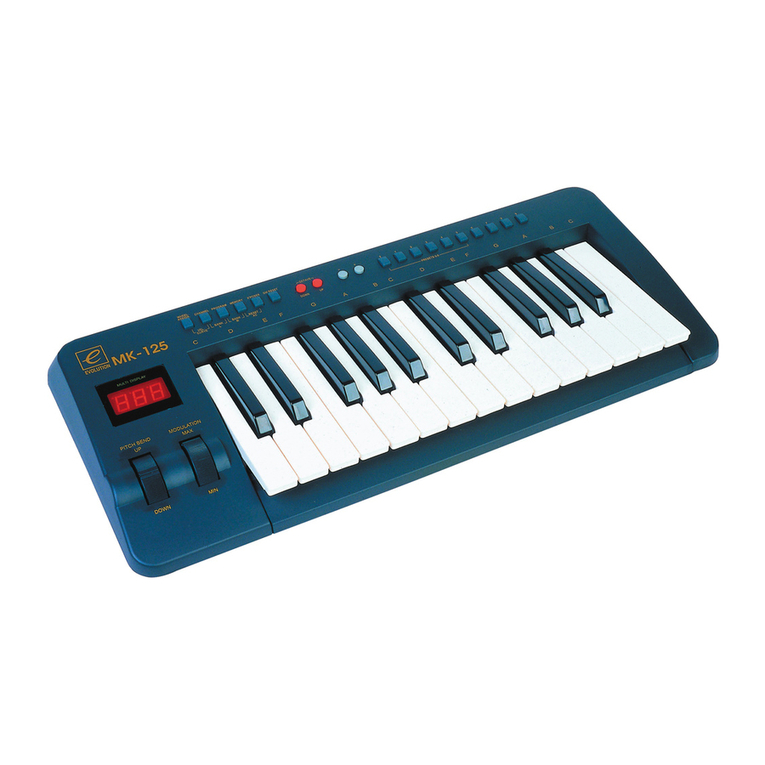
Evolution
Evolution MK-125 user manual

OTARI
OTARI MX-5050 instruction manual
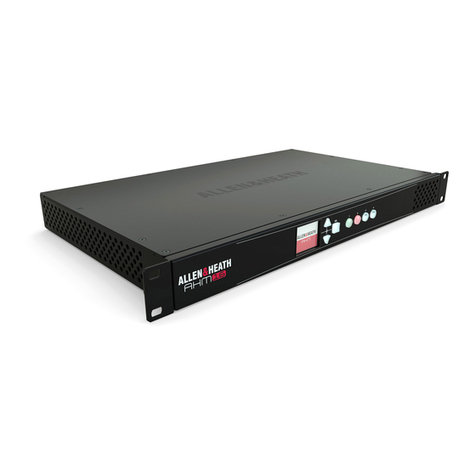
ALLEN & HEATH
ALLEN & HEATH AHM-16 Getting started guide
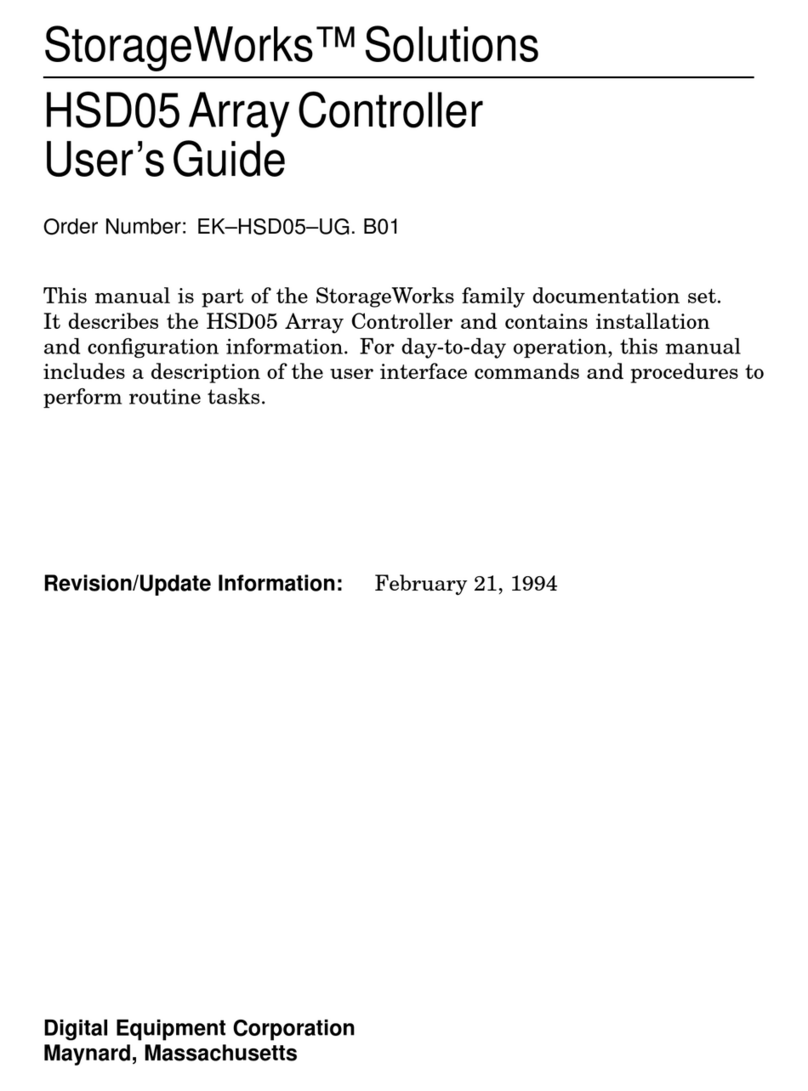
StorageWorks
StorageWorks HSD05 user guide
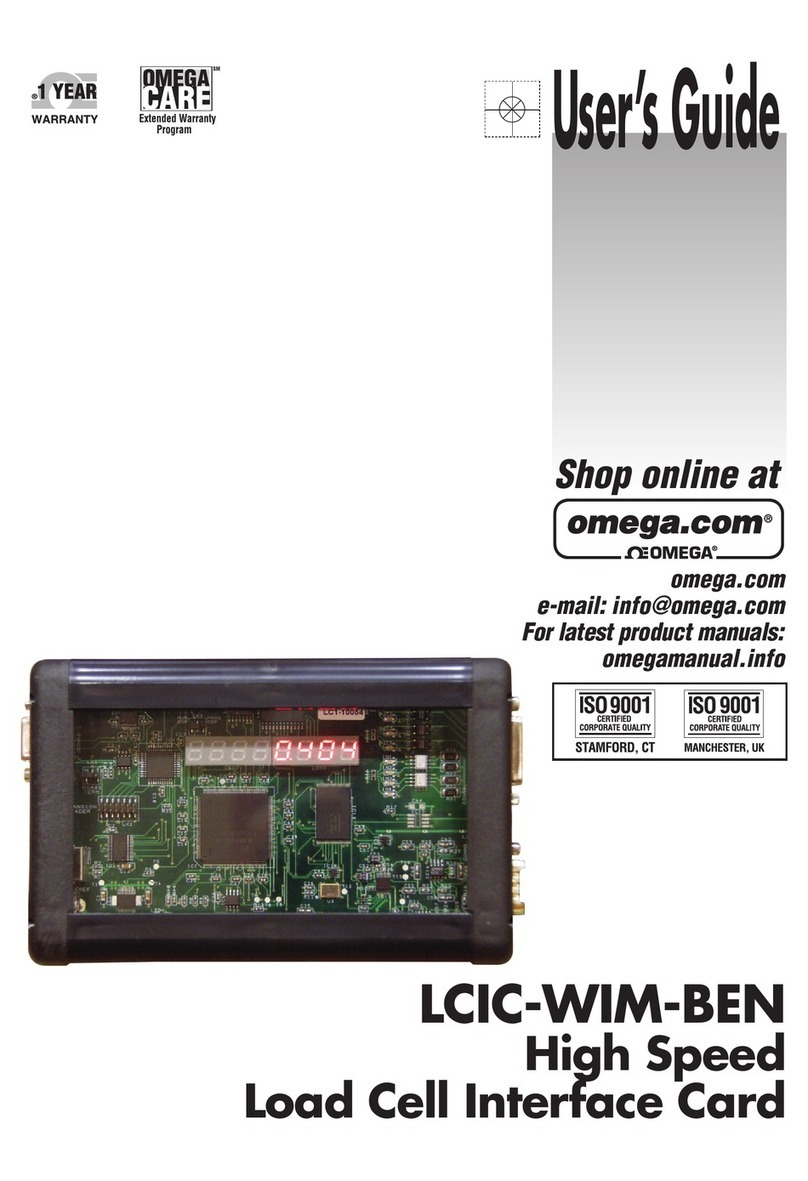
Omega Engineering
Omega Engineering High Speed Load Cell Interface Card... user guide

